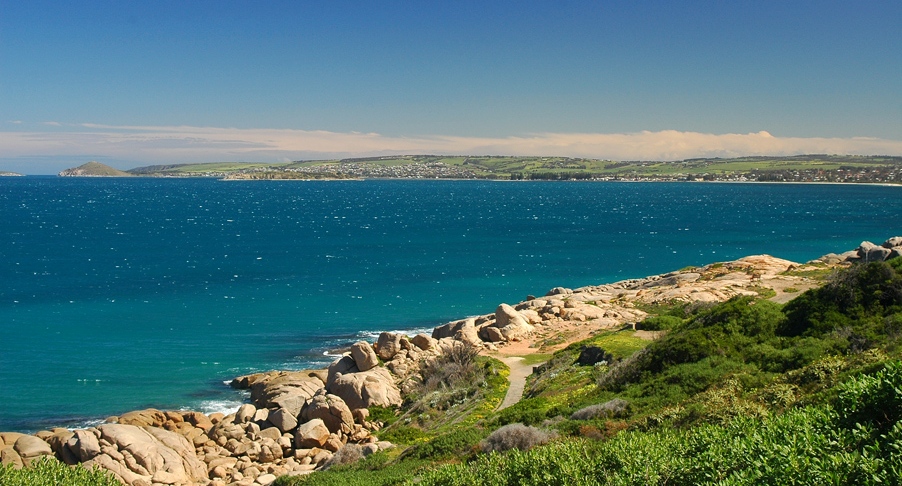BLOG
Australia's top 20 fastest growing areas
Australia's top 20 fastest growing areas
It’s that time of year again (not just the AFL season), the ABS has released 2016 Estimated Resident Population (ERP) figures for Local Government Areas and other small area geographies in Australia. As always there’s some very interesting data in this release.
Australia’s growing cities
In 2015-16, Australia’s population grew by 1.4%, or 337,800 persons to reach 24.1 million. Greater Sydney is still our biggest city, this year having (just!) hit the 5 million mark with a population of 5,005,358. Greater Melbourne is hot on Sydney’s heels with 4.64 million. Greater Melbourne recorded the greatest volume of growth – 107,770 persons, and this was also the highest growth rate at 2.4%, quite an increase from last year. Greater Sydney continues its recent growth spurt, adding 82,797 persons (1.7% growth rate). Population growth in Greater Sydney and Greater Melbourne continues to far outstrip that of other capital cities and it’s notable that Greater Brisbane added almost double the number of persons to the population in 2015-16 than Greater Perth (41,135 and 27,428 persons respectively). The slowdown in Perth’s growth is no surprise given recent macro level demographic trends in Australia and this is now being reflected in data for smaller geographic areas such as LGAs.
Where are the fastest growing areas?
The ABS does a great job at providing analysis of this data for SA2s on its website, but this analysis will focus on LGAs. Most of the fastest growing LGAs were located in Australia’s capital cities, typically on the urban fringe – but of course there are notable exceptions. The table below shows the fastest growing LGAs (top 20) as measured by the growth rate in Australia during 2015-16.
| Rank | LGA name | State | Population 2016 | Growth rate 2015-16 (%) |
|---|---|---|---|---|
| 1. | Serpentine Jarrahdale | WA | 25,943 | 7.7% |
| 2 | Camden | NSW | 77,504 | 7.5% |
| 3 | Botany Bay | NSW | 49,284 | 5.8% |
| 4 | Melbourne | VIC | 136,336 | 5.7% |
| 5 | Wyndham | VIC | 222,656 | 5.7% |
| 6 | Cardinia | VIC | 95,992 | 5.5% |
| 7 | Whittlesea | VIC | 204,643 | 4.7% |
| 8 | Kwinana | WA | 38,790 | 4.5% |
| 9 | Melton | VIC | 138,641 | 4.4% |
| 10 | Armadale | WA | 83,488 | 4.0% |
| 11 | Hume | VIC | 201,304 | 3.9% |
| 12 | Casey | VIC | 304,071 | 3.8% |
| 13 | Swan | WA | 138,160 | 3.7% |
| 14 | Mitchell | VIC | 40,595 | 3.2% |
| 15 | Wanneroo | WA | 195,697 | 3.2% |
| 16 | Lane Cove | NSW | 36,996 | 3.1% |
| 17 | Ipswich | QLD | 198,590 | 2.9% |
| 18 | Parramatta | NSW | 235,981 | 2.8% |
| 19 | The Hills Shire | NSW | 164,802 | 2.8% |
| 20 | Yarra | VIC | 91,300 | 2.8% |
*Table refers to LGAs with populations of 5,000 or more persons.
**Table does not take into consideration recent NSW Council mergers
Source: ABS, Regional Population Growth (ABS Cat. no. 3218.0)
This year, the fastest growing LGA was Serpentine Jarrahdale in WA, just pipping last year’s number one rank, Camden, at the post. Serpentine Jarrahdale is a huge growth front on the south east fringe of Greater Perth, and according to .id’s forecasts, is likely to continue to experience considerable growth.
Almost half of the top 20 fastest growing LGAs in 2015-16 were located in Victoria. The majority are outer suburban areas, with just Melbourne and Yarra representing the inner city areas. Interestingly, Melbourne and Wyndham grew at the same rate, but are vastly different areas.
What areas are losing population?
Australia has around 540 LGAs, many of them quite small in population size. In LGAs with less than 1,000 persons, relatively small adjustments to the population can result in large percentage movements. Over one third (38%) of Australia’s LGAs recorded a loss of population in 2015-16. Overwhelmingly, the LGAs recording the largest decline in population were located in outback and remote areas across Australia. The Shire of Ngaanyatjarraku, a small LGA in the mid-east of WA, near the border with SA and NT, recorded the largest population decline of -6.1%, but this represented just 86 persons and a 2016 population of 1,335.
The only sizeable location to record substantial population decline was the City of Mount Isa in outback Queensland (-2.3%). Mount Isa has experienced population decline since 2013, but the decrease between 2015-16 has been the most significant to date.
For more information on this release, including numerous tables to download and explore, please refer to the ABS website. Or if you’re interested in any of the LGAs mentioned in this post, check out our Demographic Resource Centre.
.id is a team of demographers, population forecasters, spatial planners, urban economists, and data experts who use a unique combination of online tools and consulting to help governments and organisations understand their local areas.
Georgia Allan
Georgia completed a Masters in Population Studies and Demography at Flinders University in Adelaide. At .id, Georgia is a consultant in .id's housing team. She was heavily involved in the creation and continued development of housing.id, the online tool developed to give councils an accessible evidence base for planning and advocacy. Georgia has prepared housing demand and supply analysis for a range of councils, including those in inner-city, middle ring, growth and peri-urban areas. When not in the office, she is likely to be cooking, knitting, crocheting, or buried in a good book.










